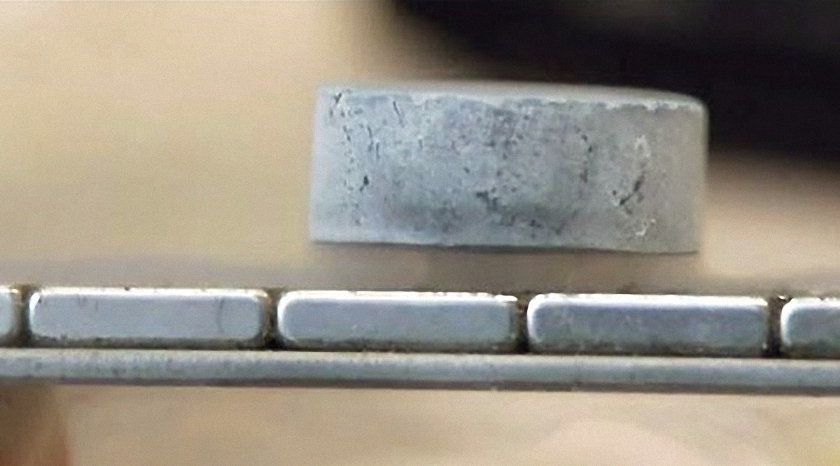Introduction
Before demonstrating magnetic levitation this video shows a small magnet being cooled to a superconducting temperature using liquid nitrogen. Once cooled the superconducting magnet is shown levitating above a section of magnetic track as seen in the featured image.
Further in the video the magnet is kept longer at superconducting temperatures by building a container of liquid nitrogen around it. It is then seen being whizzed along by hand while levitating above, clinging to the side and hanging below, a Möbius strip track plastered in neodymium magnets.
A Superconducting Magnet Supported By Magnetic Levitation While Whizzing Around A Magnetic Mobius Track
This Royal Institution (Ri) video also gives a good demonstration of eddy current generation. The eddy currents generated in a copper pipe are generated when a neodymium bar magnet falls through a copper pipe. Those eddy currents then generate a magnetic field within the pipe. That field happens to be in opposition to the magnetic field of the magnet and tries to stop it falling. It doesn’t completely stop it falling because heat energy is lost in the resistance of the copper pipe.
What Are Superconducting Magnets Used For Magnetic Levitation Made From?
If you didn’t catch it in the video the little superconducting magnet is made from yttrium, barium and copper oxide (YBCO) and is super cooled using liquid nitrogen.


Leave a Reply